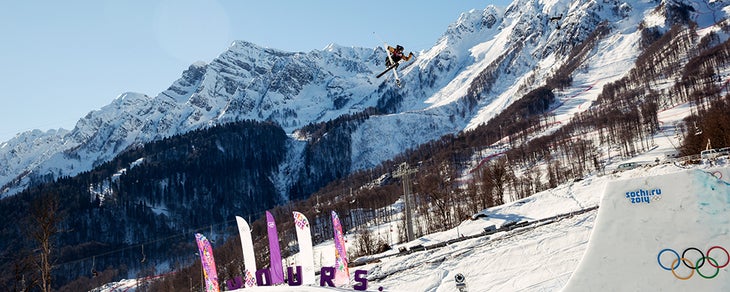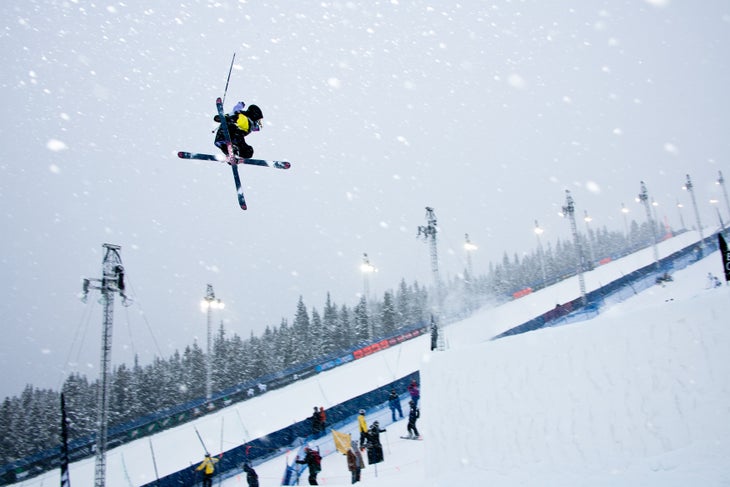Heading out the door? Read this article on the new Outside+ app available now on iOS devices for members! Download the app.

Traditional Olympic skiing conjures up images of ski racers weaving in and out of slalom gates and, starting in the 1990’s, mogul and aerial events. In 2010, skiercross was added as an official sport, but only in 2014, slopestyle was added in the Olympic freestyle skiing category. Here is what to expect in the 2018 Winter Olympics event.
Slopestyle—What is it?
Slopestyle is arguably one of the most creative events on skis, incorporating style, innovation, and technical skill. From the top of the course to the finish, Slopestyle is all about the line. Unlike other events that incorporate the fastest time, this creative event is only focused the tricks athletes can do on course with no emphasis on the clock.
Team USA Member Gus Kenworthy’s Olympic Qualifying Run from Mammoth Mountain.
For the PyeongChang Winter Olympics, competitors will begin at the top of the Slopestyle course and descend down three rail and three jump sections. Competitors can approach each section differently and perform different trick combinations throughout their run. The International Ski Federation (FIS) revealed what each of these sections would include, ranging from a rainbow-to-kink rail, boxes and tables, angled and quarterpipe takeoffs, traditional kickers, and big-time money booters. In other words, the FIS-approved course will offer plenty of opportunity for athlete creativity.
The Competition
The Olympic competition includes two rounds. The first round, or the qualification round, includes two runs for 30 male and 24 female competitors. The skiers’ best score (marked out of 100) of the two runs will then be chosen. For the 2018 Winter Olympics, the top 12 skiers with the highest score will move on to the next and final round. During finals, there will be three runs where the skier with the best score will be marked the winner (scores from the first round do not carry over).
Judging Criteria

Slopestyle judging includes a head judge that supervises a panel of five to six judges. These judges look at five different criteria
- Amplitude: How much distance the skier can get from the ground, and landing in the “sweet spot” of the jump to carry speed to the next feature.
- Technical difficulty: Spinning with more rotations, skiing switch (backwards), doing a more technical grabs, etc., are just a few of the ways that competitors can make their tricks more difficult and therefore score higher.
- Variety: Judges don’t want to see the same tricks done over and over again by the same competitor, and neither do viewers. Being able to do interesting combinations (which often is dependent on the course) shows the technical ability of the skier.
- Execution: The athletes are not only able to do the technical aspects of tricks well, but also with smoothness and style.
- Progression (The style factor): This criteria is about the overall flow and linkage of the line but also about progressing the sport—taking tricks to new and creative heights.
Despite having these five criteria, there is no overarching standard to determine who is the winner. Overall impression is a critical yet informal aspect of the judges’ job. This can make scoring difficult as judges try to rank skiers among the rest of the group, and explains why some skiers can just barely miss the podium despite outstanding, yet different, runs than the rest of the competitors.